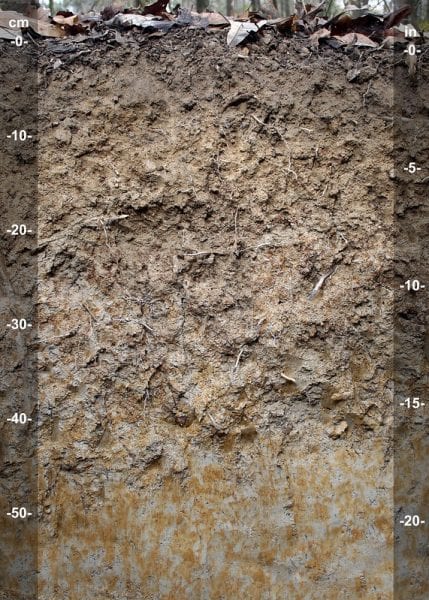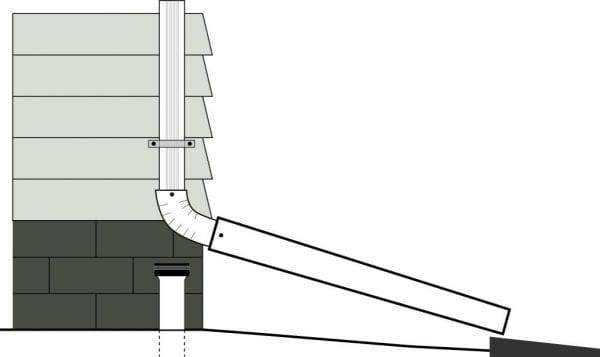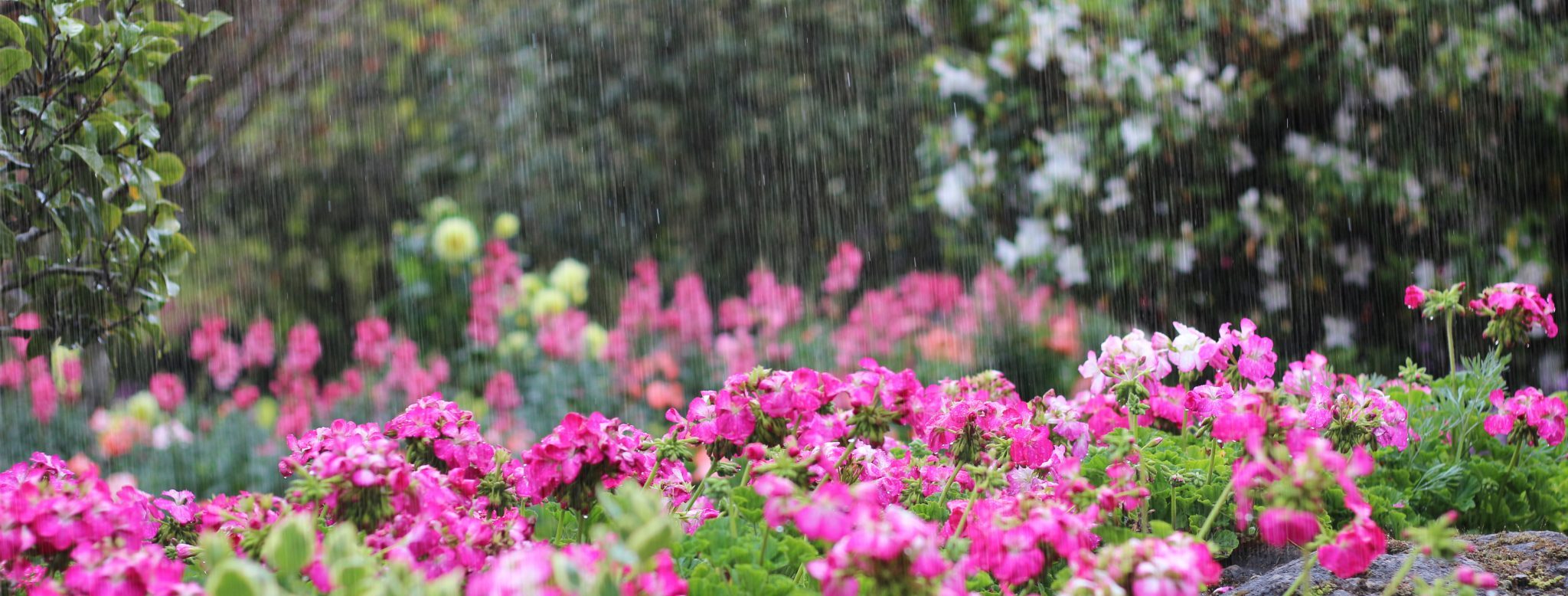Fish & Water

-

Figure 12. Gray soils may indicate the presence of standing water, as indicated at the bottom of this soil profile. (Photo credit: John A. Kelley, USDA Natural Resources Conservation Service)
Walk through your yard and identify potential locations. Note any strong slopes or low spots. It is helpful to watch water flow patterns on the landscape during a rainy day.
- Avoid areas with poorly drained soils. Rain gardens should not be constructed in locations that stay wet throughout the rainy season. Sediment deposits may reveal where water frequently ponds.
- Note soil color. The presence of water modifies soil color by affecting the oxidation rate, making soil color a helpful indicator of a soil’s ability to drain water. Higher water content in the soil leaves less room for air, specifically less oxygen.
- In well-drained (and therefore oxygen-rich) soils, red and brown colors caused by oxidation are more common. These are good soils for rain gardens.
- Wet (low-oxygen) soils usually appear gray or greenish due to the presence of reduced (ferrous) iron oxide (figure 12). Avoid these sites for your rain garden.
- Note areas where water might drain to your neighbors’ or public property. You don’t want to inadvertently harm adjacent property with rain garden overflow.
- Identify potential locations about 10 feet away from your downspouts where water tends to flow (figure 13). Keep in mind that you can redirect water from your downspouts toward a rain garden site (figure 14).
- Gutters and other topographical features will sometimes push water toward a pinch point or an area where most of the water is directed. Consider this a potential area for a rain garden (figure 15).
- Avoid placing your rain garden in a location higher than your yard’s water collection points.
- Look for areas nearby where overflow from a rain garden can be absorbed or safely directed into an approved stormwater collection point, such as a street-side gutter or storm drain. Place your garden between the runoff source and its destination—your rain garden.

Figure 13. Rain garden locations with site considerations.

Figure 14. Using a simple pipe to redirect water to a rain garden.

Figure 15. Topographical pinch points could be a good location for a rain garden.
Where Not to Place Your Rain Garden
- Do not place your rain garden on top of a septic system drain field. When uphill from a septic system, allow at least 50 feet between a rain garden and the septic system.
- If capturing roof water runoff, place your rain garden at least 10 feet downslope of a roof downspout to avoid impacting existing structures. You can direct water from your downspout to a rain garden by creating a swale or by using rocks or tiles. Avoid placing rain gardens uphill of a house.
- A rain garden should be the final feature installed as part of a larger landscape or architectural project. Sediment flowing into your rain garden from construction or loose soil may limit infiltration.
- To prevent slumping and to protect concrete structures, make sure the outer edge of your rain garden is at least the following distance from a structure:
- 3 feet from a sidewalk
- 6 feet from a basement
- 2 feet from a crawl space or slab
- 10 feet from a retaining wall
- Just because there is ponding water in your yard does not mean it is a good place for a rain garden. Your soils need to have good percolation rates to avoid standing water for more than 2 or 3 days.
- Avoid areas such as wetlands, natural springs, or seeps that stay wet during the rainy season.
- Avoid placing a rain garden under large trees. The tree roots can be damaged by the excavation and may also be overwhelmed by the amount of water that pools beneath them.
- Avoid soils that have been contaminated by chemicals or other toxic substances.
- To prevent surface erosion, do not place rain gardens on slopes steeper than 10 percent. If you have sloped property, consider contacting a licensed landscape professional or engineer to design site-specific safe ways to store and route water off-site without damage.
- Don’t make your neighbors angry! During large storms, it is normal for rain gardens to overflow. Make sure to route the overflow to a safe location away from steep slopes, structures, and neighbors’ properties.
 This is an excerpt from How to Install a Rain Garden, ANR-2768.
This is an excerpt from How to Install a Rain Garden, ANR-2768.
Laura Bell, Project Coordinator; Eve Brantley, Water Resources Specialist and Professor; Caitlin Sweeney, Assistant Coordinator; and Naomi Pitts, Assistant Coordinator, all with Alabama Extension Water Program at Auburn University

